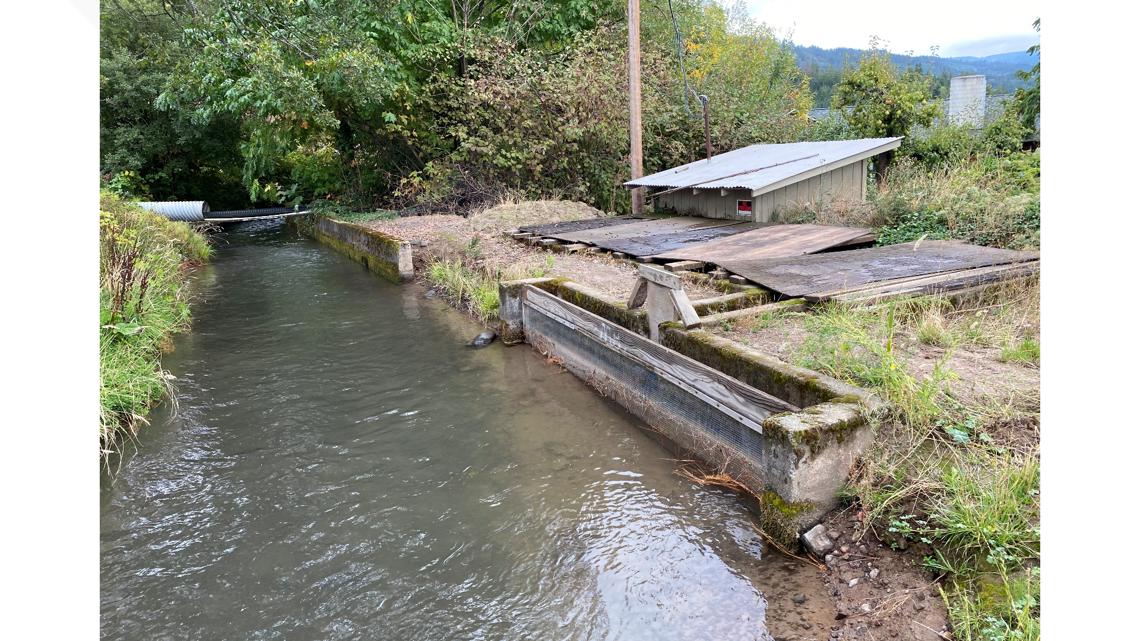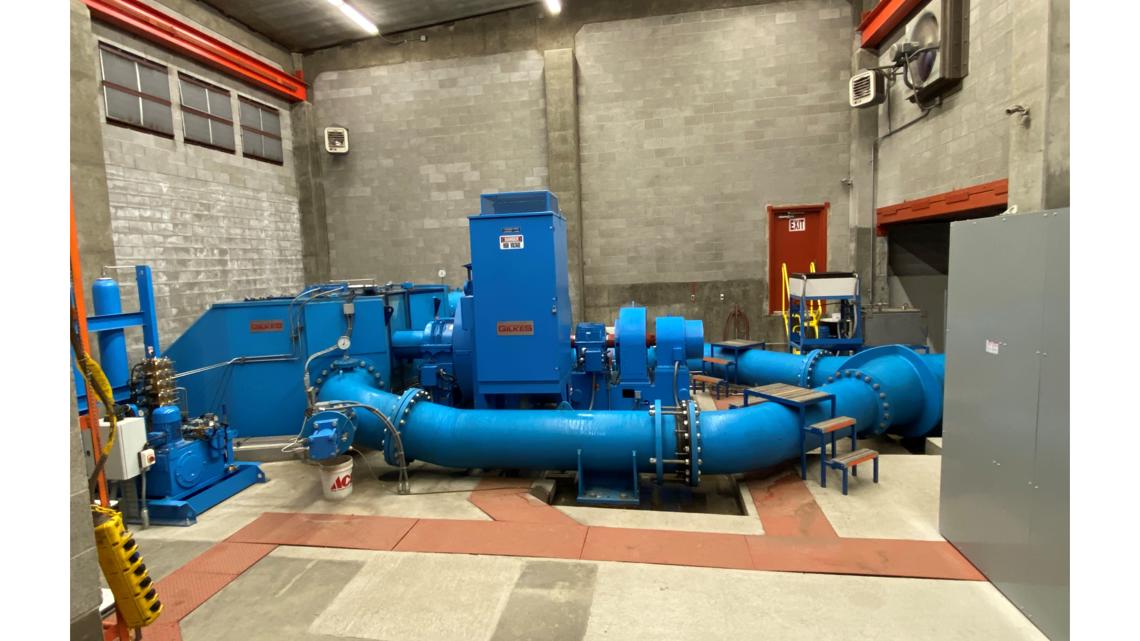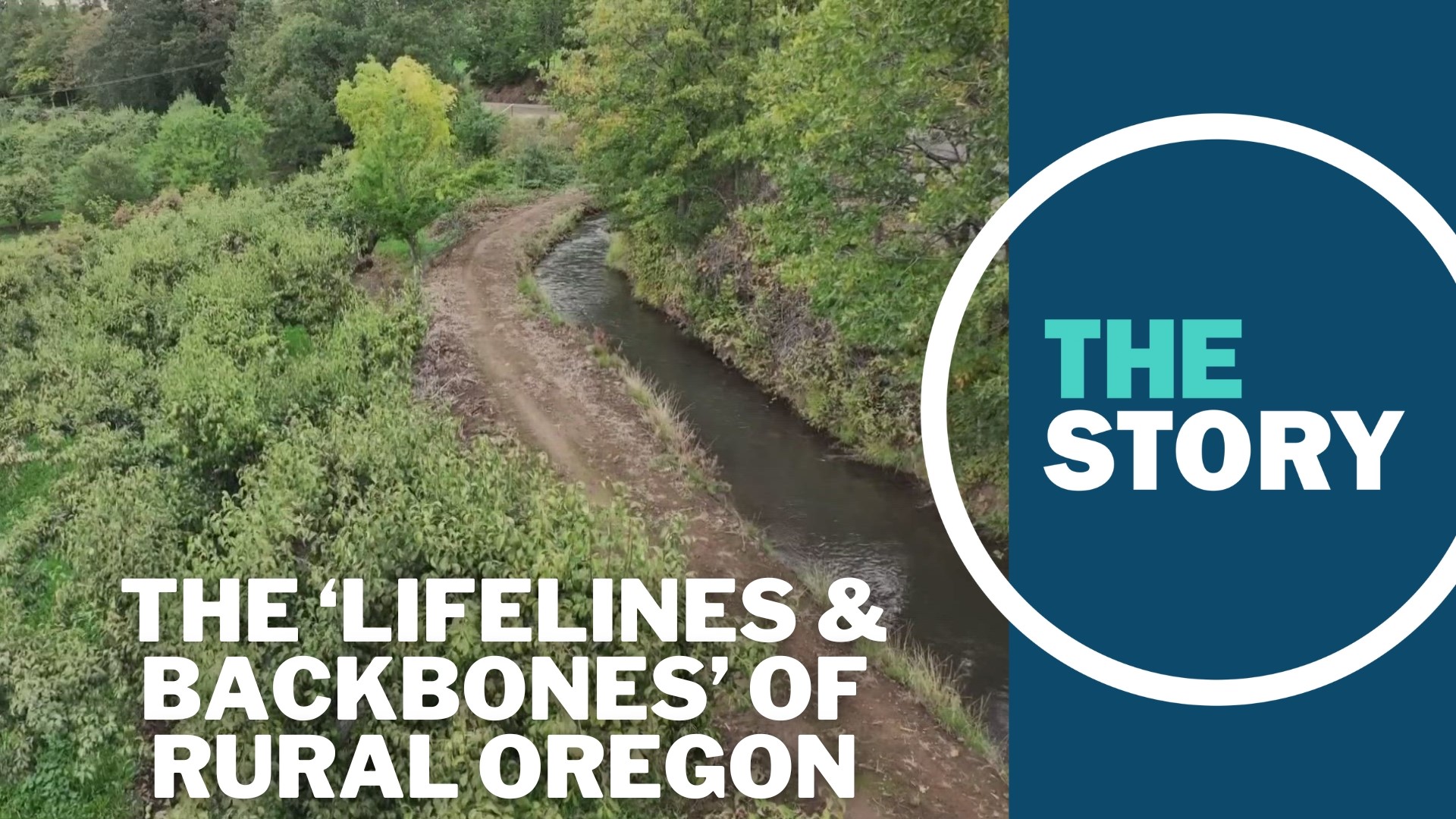HOOD RIVER, Ore. —
Standing above a pear orchard on the east side of the Hood River Valley, Steve Pappas can only guess how long the irrigation canal at his feet has been there.
“I don’t know the exact date but it’s from the early 1800s,” he said, gesturing toward the shallow canal dug into the hillside.
Pappas is the manager of the East Fork Irrigation District, which provides water for more than 10,000 acres of farms and orchards dotted with pear, apple and cherry trees. And Pappas is facing a problem endemic across the west as irrigation managers confront a pair of thorny problems: aging infrastructure and water shortages made worse by climate change.
Solving these problems has gained increasing urgency, said Julie O’Shea, executive director of the Farmer’s Conservation Alliance, a nonprofit that helps irrigation districts work to modernize their systems and, perhaps more importantly, find the funds to do it.
“We see systems that are losing 30-70% of the water being drawn. It’s not making it out to the farm,” she said, noting that systems with open, earthen canals are particularly vulnerable to evaporation and seepage. “The systems themselves are just not as efficient in meeting the dynamic needs of modern water delivery.”
For Pappas, modernizing the system he oversees — saving water for both farmers and the environment — is more than a pipe dream. It’s an actual pipe.
A ‘traveling’ system
Along the east fork of the Hood River, near where water is diverted into the irrigation system, Pappas explains that his district uses what is known as a “traveling” system.
That means that he needs to keep a certain amount of water flowing through his canals just in case one of his customers needs to water their crops. He likened it to leaving your kitchen sink running all day in case you want to fill up a glass of water at some point.
That makes for a lot of wasted water.
“Whatever they’re not using, that would kick into an overflow, the overflow just kicks into a drainage ditch,” he said. “If nobody’s using the water, all this water could have stayed in the river.”


Much of the water that flows into his district comes from glacial melt off Mount Hood, and Pappas has seen the effects of warming temperatures trickle from the slopes of the mountain downriver to where he draws water for irrigation.
“As the climate changes, the glaciers are smaller and smaller,” Pappas said. “We have less than a dozen. Twenty years ago there were over two dozen.”
To modernize the East Fork system, Pappas said they’re starting at the top, where water is diverted from the river. Currently, water is let into the system through a series of headgates controlled by large metal cranks, operated by hand. They’ll soon be replaced by an automated system that can be operated remotely, which allows for a much finer control over how much water is taken out.
After that, much of the open canal system will be converted to buried pipelines, but that kind of work doesn’t come cheap. Pappas said piping on their secondary canals will be completed within the next seven years, but with a price tag near $40 million.
To fully convert the main canal will cost an additional $64 million.
“You can donate on our website,” he said, only half joking.
But it’s not just the steep cost that’s keeping irrigation districts from modernizing. There are state and federal programs that provide matching grants but they require extensive applications, technical reviews, environmental assessments and permitting under the National Environmental Policy Act.
That’s where groups like the Farmer’s Conservation Alliance and Energy Trust of Oregon come in. Both organizations have been working with Pappas and more than two dozen other irrigation districts across the state to help them realize their goals.
“Those plans are really the keys to unlocking federal funding for piping and other modernization work,” said Dave Moldal, senior program manager with Energy Trust. “There are massive durable community benefits that will persist for generations to come from modernization.”
O’Shea pointed out that the Hood River Valley is home to one of the highest concentrations of endangered aquatic species in the world, and saving water won’t just help farmers.
“We know we want farms and food grown in our state. We know we want water in streams. We know we want energy resiliency,” she said. “These pieces aren't in competition with each other. When you modernize an irrigation system, you really get this win, win, win benefit.”
To see what those benefits look like, all you have to do is look across the valley.
‘You have to have partners’
At the Farmers Irrigation District, they’re seeing the fruits of modernization, but it didn’t happen overnight.
For the last 30 years, the district has been implementing modernization efforts piece by piece. Now, the system is fully modernized and O’Shea called it “one of the leaders of the irrigation modernization movement.”
Their headgates are automated and their system is fully piped, a far cry from what the system looked like in the early 90s, when water moved through open canals and wood flumes.
“We had 70 miles of open canal running through really steep slopes, wooded slopes, and they continually failed,” said Les Perkins, who manages the district. “So we started putting pipe in the ground and that did a couple of things for us. It made it easier to get the water down where we used it and then it could save a whole bunch of water. We lost more than half of the water from the point that we diverted it to the point we got it to the farms.”
Converting canals to buried pipes doesn’t just prevent seepage and evaporation, though. With a fully piped system, gravity works to pressurize the water as it flows downhill. That means farmers don’t need to pump it out of canals and they can draw from the system on-demand, unlike the “traveling” system used in the East Fork district.
“Most of our growers are irrigating with about half of the amount of water that they did 30 years ago,” Perkins said. “Before we started piping, there were years that we would get into August and not be able to deliver water to our growers, which you can't do. We grow apples, pears and cherries. You can't go a year without water. You can't even go a month without water.”
Having a pressurized system also opened the door to in-conduit hydropower. At the bottom of the Farmers district system, about 5 miles downriver from where they divert water from the Hood River, sits one of the two powerhouses run by the district.


The water runs into the building and is blasted against a circular rudder at high pressure, which spins a shaft connected to a turbine that produces electricity. Between the two powerhouses, the district is capable of producing up to 4.4 megawatts of power, enough to keep the lights on at more than 4,000 homes.
“It’s been the best investment we could’ve made,” Perkins said. “We started putting pipe in the ground and that actually gave us more water available. It made more money through the powerhouses, it gave better returns for our growers and that feedback loop just kept going for 30 years.”
Perkins estimated that the district has spent around $60 million on upgrades over the last three decades, with assistance from many outside groups including the Farmers Conservation Alliance, the Energy Trust of Oregon, the Confederated Tribes of Warm Springs and many others.
“It's extremely expensive to put pipe in the ground. It can be $1,000 a foot,” Perkins said. “It's an impossible task to try to put that onto just a few growers. There's no way that they can make it pencil, and so you have to have partners that help you get through it.”
Low water, high stakes
While O’Shea lauded the work at Farmers Irrigation District, she said a more aggressive timeline will be necessary for districts like East Fork.
“We know that they've been able to use 50% less water, that the productivity on farms is better and the habitat is better, but it took 30 years,” she said. “We don't have 30 years.”
Of the more than 70 irrigation districts in Oregon, the Conservation Alliance is working with 35 of them to spur action. For its part, Energy Trust of Oregon has been working to identify which systems would be suitable for hydropower.
“To date, we’ve identified over 35 megawatts of potential in-conduit hydropower in Oregon,” said Moldal. “It's a small part of a broader campaign to produce carbon-free renewable electricity for the benefit of Oregonians.”
For Pappas, change can’t come soon enough.
“Economically, if we don’t have this water and we don’t modernize, eventually these farms dwindle away and become condos,” he said.
But it's not just about the farmers he provides water for, it's about everyone — and everything — that calls the Hood River Valley home.
“We need a happy balance. The farmers need water to produce the food or crops, but we also in turn need to make sure we’re keeping a healthy ecosystem for the fish and the habitat. By modernizing our system, closing it off, closing up canals, it all works in harmony together.”
Because there’s one lesson he’s learned in his time managing the water district.
“Every drop of water that’s wasted, you never get back,” he said.

